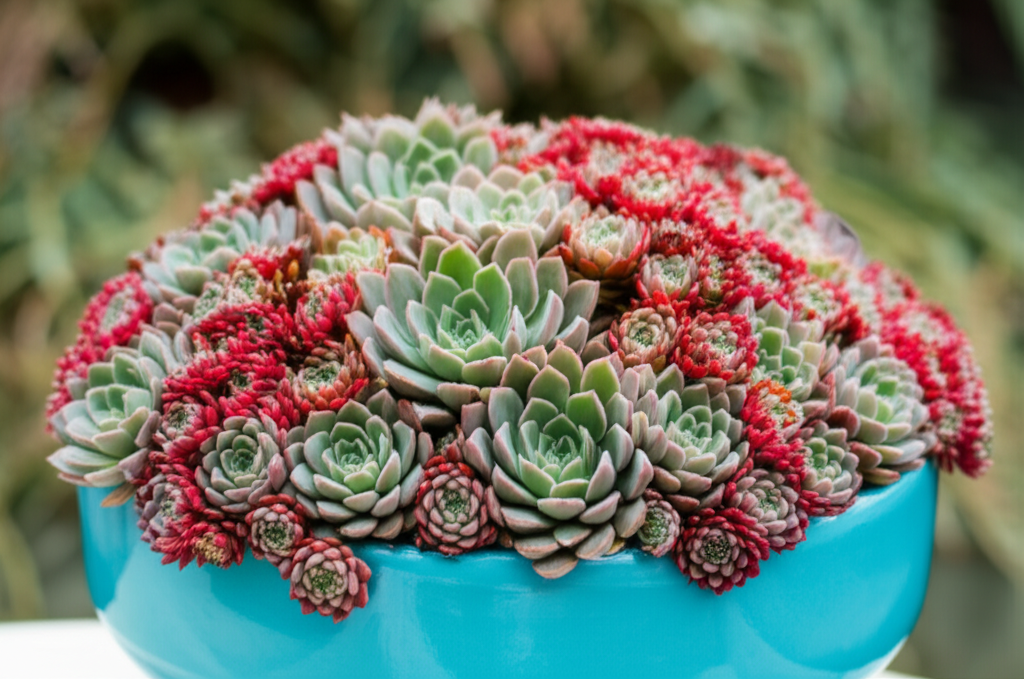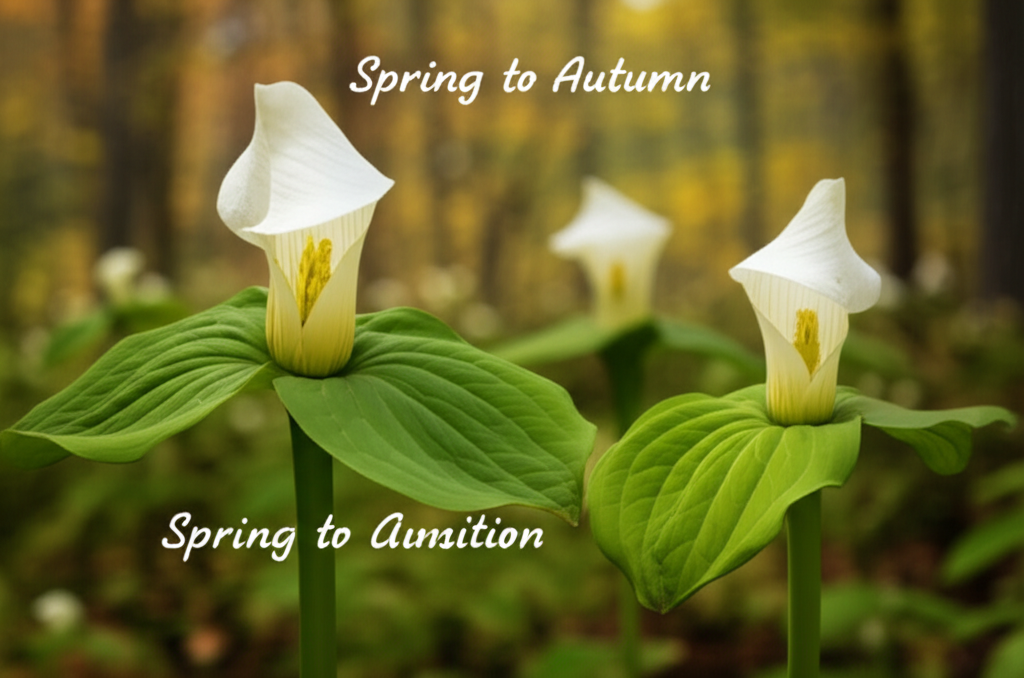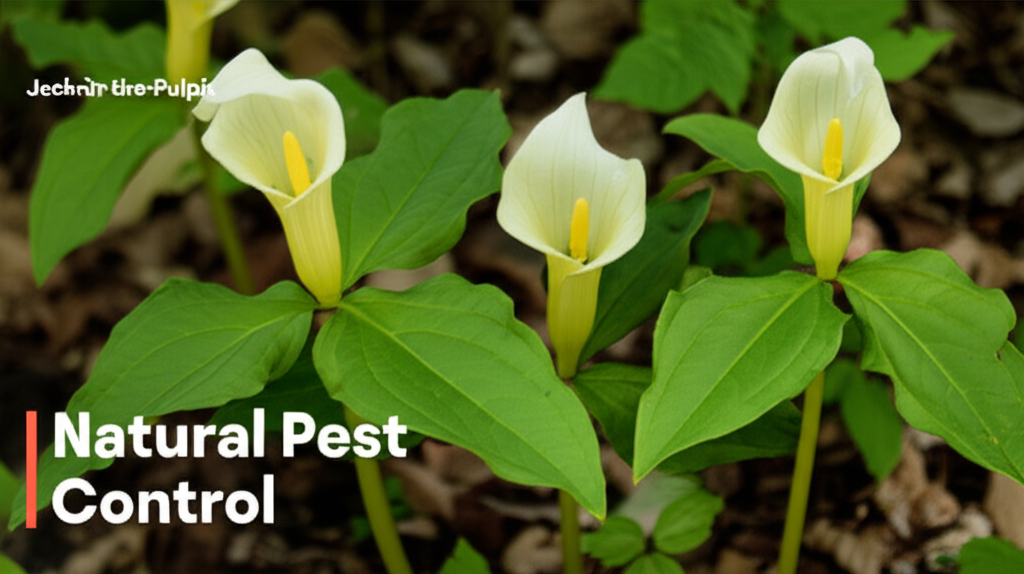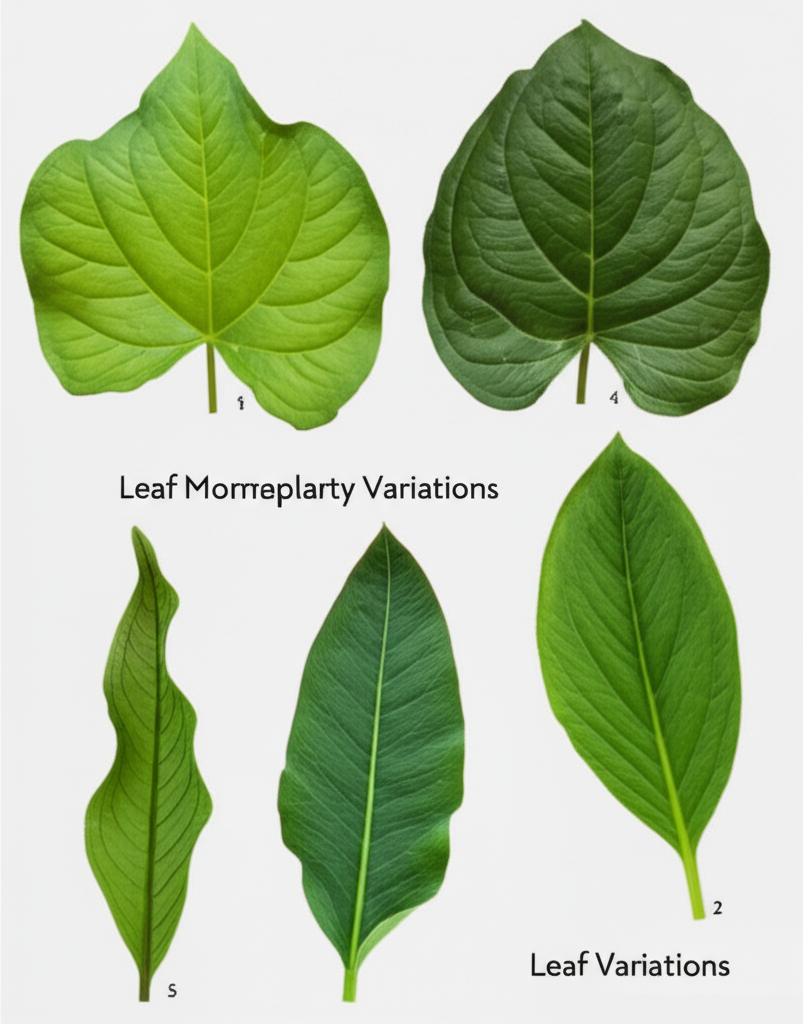Introduction: The Charmed Life of Ice Plant Succulents in Decorative Containers
The world of succulents offers an endless array of textures, colors, and forms, and among the most captivating are the ice plants. Renowned for their shimmering, crystalline structures that resemble dew drops or ice crystals, these succulents bring a unique touch of enchantment to any setting. Their ability to thrive in decorative containers makes them particularly versatile for both indoor and outdoor displays, transforming ordinary pots and planters into miniature landscapes of sparkling beauty. This guide delves into the art and science of planting ice plant succulents in decorative containers, covering everything from selecting the right varieties and containers to essential care practices that will ensure your shimmering displays flourish.
Understanding Ice Plant Succulents: More Than Just a Pretty Face
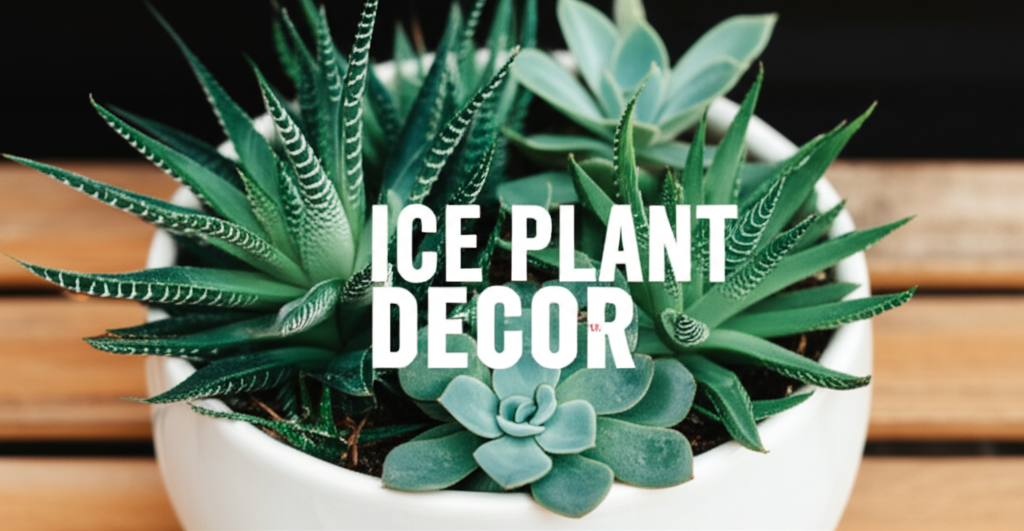
Ice plants, belonging primarily to the Aizoaceae family, are a diverse group of succulents adapted to arid and semi-arid conditions. Their defining characteristic, the specialized epidermal cells called “bladders” or “papillae,” are responsible for the characteristic glistening or “ice-like” appearance. These structures help reflect sunlight, reducing heat absorption, and can also collect moisture from the air. This fascinating adaptation contributes to their low-maintenance appeal, making them ideal for busy gardeners or those new to succulent cultivation.
Key Varieties for Decorative Containers
While many ice plant varieties exist, some are particularly well-suited for container gardening due to their compact growth habit, vibrant colors, and striking crystalline structures.
- Delosperma (Hardy Ice Plants): Known for their resilience and often vibrant, daisy-like flowers, many Delosperma varieties are excellent for containers, particularly in cooler climates where other succulents might struggle. Their trailing or mat-forming habit is perfect for spillover effects in hanging baskets or mixed planters.
- Mesembryanthemum (Common Ice Plants): These are perhaps the most recognized for their dazzling, shimmering foliage. Varieties like Mesembryanthemum crystallinum (Common Ice Plant) and Mesembryanthemum cordifolium (Heartleaf Ice Plant) offer a beautiful groundcover effect in containers and are popular for their prolific flowering.
- Lithops (Living Stones): While not typically categorized with the more commonly known “ice plants,” some Lithops species share the characteristic of specialized epidermal cells that can create a glistening appearance. Their unique, stone-like forms make them highly sought after for artistic container arrangements.
Key Facts/Comparison of Popular Ice Plant Succulents for Containers
| Succulent Type | Botanical Name(s) | Key Visual Feature | Growth Habit | Hardiness (USDA Zones) | Flower Color(s) | Container Suitability |
| :———————- | :———————————————– | :———————————————– | :—————– | :——————— | :————————- | :——————– |
| Hardy Ice Plant | Delosperma spp. | Crystalline papillae, vibrant flowers | Mat-forming, trailing | 5-10 | Pink, purple, orange, yellow | Excellent |
| Common Ice Plant | Mesembryanthemum crystallinum | Sparkling, hairy papillae | Spreading, low-growing | 9-11 | White, pink | Good |
| Heartleaf Ice Plant | Mesembryanthemum cordifolium | Smooth, heart-shaped leaves, crystalline sheen | Trailing, sprawling | 9-11 | Pink, purple | Excellent |
| Living Stone | Lithops spp. | Thick, fused leaves, often translucent window | Clumping, low-growing | 9-11 | White, yellow, orange | Excellent (for feature) |
Selecting the Perfect Decorative Container
The container is not just a vessel; it’s an integral part of the decorative planting. For ice plant succulents, the container choice can significantly enhance their unique aesthetic.
Material Matters
The material of your container will affect drainage, insulation, and overall appearance.
- Terracotta/Clay: These porous materials offer excellent breathability, allowing soil to dry out quickly, which is crucial for succulents. They also provide a natural, earthy aesthetic that complements the crystalline sparkle of ice plants.
- Ceramic: Glazed ceramic pots can add a pop of color and sophistication. Ensure they have adequate drainage holes, as the glaze can prevent moisture evaporation.
- Concrete: Modern concrete planters offer a minimalist and industrial look. Like terracotta, they can be somewhat porous, aiding drainage.
- Metal: While stylish, metal containers can heat up significantly in direct sunlight, potentially damaging succulent roots. If using metal, opt for lighter colors and ensure good insulation or placement in partial shade.
- Plastic/Resin: Lightweight and affordable, plastic containers retain moisture longer than porous materials. This requires careful watering to prevent root rot.
Size and Depth
- Size: Choose a container that is proportionate to the size of the ice plant(s) you intend to plant. Overly large containers can lead to waterlogged soil, while too-small containers will restrict root growth.
- Depth: Succulents generally have shallow root systems. A container that is wider than it is deep is often ideal, allowing for better airflow and surface area for the roots to spread. However, ensure there is enough depth to accommodate the root ball and a layer of well-draining soil.
Drainage is Non-Negotiable
This cannot be stressed enough: all decorative containers for ice plants must have drainage holes. Without adequate drainage, water will accumulate at the bottom of the pot, leading to root rot, the most common killer of succulents. If a decorative pot lacks holes, consider using it as a cachepot, placing a smaller, drilled pot with the succulent inside.
Crafting the Ideal Planting Medium
Ice plant succulents, like most succulents, demand a well-draining soil mix. Standard potting soil retains too much moisture and will almost certainly lead to root rot.
The Foundation: A Custom Mix
A good starting point is a commercial succulent or cactus potting mix. However, to ensure optimal drainage, it’s often best to amend this mix further.
- Components:
1 part coarse sand (not play sand, which is too fine)
1 part perlite or pumice (for aeration and drainage)
1 part succulent/cactus potting mix or compost
- Why it Works: The sand improves drainage and aeration. Perlite and pumice are lightweight, porous materials that create air pockets within the soil, preventing compaction and allowing excess water to escape freely.
Top Dressing for Aesthetics and Function
A top dressing of gravel, small pebbles, or decorative sand can not only enhance the visual appeal of your container planting but also serve functional purposes.
- Aesthetics: It provides a finished, professional look and can highlight the textures and colors of the succulents.
- Functionality:
Helps keep the base of the plant dry, reducing the risk of rot.
Suppresses weed growth.
Helps retain soil in the pot during watering or wind.
Can help regulate soil temperature.
Planting Your Ice Plant Succulents: Step-by-Step
The process of planting is straightforward, but attention to detail ensures the best start for your shimmering display.
Steps/Pros-Cons of Planting Ice Plant Succulents
| Step | Description | Pros | Cons |
| :—————————- | :—————————————————————————————————————————————————————————————————- | :————————————————————————– | :————————————————————————————————– |
| 1. Prepare the Container | Ensure the container has drainage holes. If none, consider drilling them or using a cachepot. Clean the container if it’s a used one. | Prevents root rot, ensures plant health. | Drilling may damage decorative pots. Cachepots add an extra step. |
| 2. Prepare the Soil | Mix your well-draining soil or use a quality commercial cactus/succulent mix, potentially amended with perlite or pumice. | Optimizes drainage and aeration for root health. | Requires sourcing specific components for custom mixes. |
| 3. Add Soil to Container | Fill the container about one-third to halfway with the prepared soil mix. | Creates a base for planting. | Can be messy if not done carefully. |
| 4. Position the Succulents | Gently remove the ice plant succulents from their nursery pots. Loosen any tightly bound roots. Place them in the container, arranging them aesthetically. Consider their mature size and growth habit. | Allows for creative arrangement and visual planning. | Risk of damaging delicate roots during removal and placement. |
| 5. Fill with Soil | Add more soil around the succulents, ensuring their root balls are covered. Leave about an inch of space between the soil surface and the rim of the container for watering. | Stabilizes the plants and fills the remaining space. | Overfilling can cause soil to spill during watering. |
| 6. Add Top Dressing (Optional) | Cover the exposed soil surface with gravel, pebbles, or decorative sand. | Enhances appearance, aids drainage at the surface, and suppresses weeds. | Can add weight to the container, might be more costly depending on material. |
| 7. Initial Watering | Water lightly to settle the soil. Avoid over-saturating, especially immediately after planting. | Helps roots establish and reduces transplant shock. | Overwatering at this stage can still be detrimental if drainage is poor. |
Essential Care for Flourishing Ice Plant Displays
Once planted, providing the right care will ensure your decorative container ice plants thrive and maintain their dazzling appearance.
Light Requirements
Most ice plant succulents thrive in bright light.
- Outdoors: Full sun to partial shade is generally ideal. In very hot climates, some afternoon shade can prevent scorching, especially for varieties with finer, more delicate papillae.
- Indoors: Place them in the brightest window possible, ideally one that receives several hours of direct sunlight per day. If natural light is insufficient, consider using a grow light.
Watering Wisdom
This is where many succulent owners make mistakes. Ice plants are drought-tolerant and prefer to dry out between waterings.
- How to Tell When to Water: The soil should be completely dry to the touch, several inches down. You can also observe the leaves; slightly wrinkled or softer leaves can indicate thirst.
- How to Water: Water thoroughly until water runs out of the drainage holes. Avoid misting the foliage, as this can encourage fungal issues and obscure the crystalline effect.
- Frequency: This will vary greatly depending on your climate, the container material, and the time of year. In summer, you might water every 1-3 weeks. In winter, watering may be needed only once a month or even less.
Temperature and Air Circulation
- Temperature: Ice plants generally prefer warm temperatures. Many are not frost-tolerant, so bring them indoors during cold snaps if you live in a cooler climate.
- Air Circulation: Good airflow is important, especially indoors, to prevent fungal diseases. Avoid overcrowding plants.
Fertilizing (Minimal)
Succulents are not heavy feeders.
- When: Fertilize sparingly during the growing season (spring and summer).
- What: Use a balanced, diluted liquid fertilizer specifically formulated for succulents or cacti, or a general-purpose fertilizer diluted to half or quarter strength.
- How Often: Once or twice during the growing season is usually sufficient.
Pruning and Maintenance
- Deadheading: Remove spent flowers to encourage more blooms and maintain a tidy appearance.
- Trimming: If plants become leggy or overgrown, trim them back. The cuttings can often be propagated to create new plants.
Troubleshooting Common Issues
Even with the best care, problems can arise.
- Root Rot: The most common issue, indicated by mushy, yellowing, or blackened leaves and stems. Caused by overwatering and poor drainage. Solution: Repot in dry, well-draining soil, trim away any affected roots, and water very sparingly until signs of recovery appear.
- Sunburn: Brown or white patches on the leaves, usually on the parts most exposed to intense sun. Solution: Move the plant to a location with less direct, intense sunlight, or provide shade during the hottest part of the day.
- Pests: Mealybugs and spider mites can occasionally infest succulents. Solution: Isolate the affected plant and treat with insecticidal soap or neem oil.
Creative Container Combinations and Styling
The true magic of ice plant succulents in decorative containers lies in their styling potential.
Mixed Planters: A Symphony of Textures
Combine ice plants with other succulents that have complementary needs and aesthetics.
- Contrast: Pair trailing ice plants with upright echeverias or rosette-forming sempervivums for visual interest.
- Texture Play: Mix the crystalline sparkle of ice plants with the powdery bloom of succulents like Graptopetalum or the architectural forms of Haworthia.
- Color Harmony: Choose succulents with foliage colors that complement the flowers or crystalline sheen of your chosen ice plant.
Themed Displays
Create miniature desert landscapes, rock gardens, or even whimsical fairy gardens using decorative containers and ice plant succulents.
- Desert Oasis: Use a wide, shallow terracotta bowl with a mix of ice plants, small cacti, and gravel.
- Coastal Charm: Employ a weathered ceramic pot with a sandy top dressing and trailing ice plants to evoke a seaside feel.
- Zen Garden: A minimalist concrete planter with a few strategically placed ice plants and raked gravel can create a serene focal point.
Hanging Baskets and Wall Planters
Trailing ice plant varieties, such as Delosperma or Mesembryanthemum cordifolium*, are perfect for creating cascading displays in hanging baskets or wall-mounted planters, adding vertical interest to patios, balconies, and indoor spaces.
Conclusion: Bringing Sparkling Beauty into Your Space
Ice plant succulents offer a unique and captivating way to bring a touch of shimmering beauty into your home or garden. Their striking crystalline structures, coupled with their low-maintenance nature and adaptability to decorative containers, make them an accessible and rewarding choice for plant enthusiasts of all levels. By understanding their needs for bright light, excellent drainage, and careful watering, you can create stunning, long-lasting displays that capture the ephemeral magic of frost and sparkle. Embrace the creative possibilities, experiment with different containers and arrangements, and watch as your ice plant succulent plantings transform ordinary spaces into enchanting, glittering havens.
html
<h2>Ice Plant Succulent Decorative Container Planting: Key Facts/Comparison</h2>
<table>
<thead>
<tr>
<th>Feature</th>
<th>Ice Plant (Mesembryanthemum crystallinum)</th>
<th>Other Common Succulents (e.g., Sedum, Echeveria)</th>
</tr>
</thead>
<tbody>
<tr>
<td>Appearance</td>
<td>Distinctive bubbly, translucent leaves (ice-like appearance), trailing growth habit.</td>
<td>Varied leaf shapes (rosettes, spikes, pads), often thicker and more fleshy.</td>
</tr>
<tr>
<td>Water Needs</td>
<td>Low to moderate; prefers to dry out between waterings but can tolerate slightly more moisture than some succulents.</td>
<td>Very low; prefers to dry out completely between waterings. Highly susceptible to overwatering.</td>
</tr>
<tr>
<td>Sunlight Needs</td>
<td>Full sun to partial shade. Can scorch in intense afternoon sun in very hot climates.</td>
<td>Full sun is generally preferred for optimal growth and color, though some tolerate partial shade.</td>
</tr>
<tr>
<td>Soil Requirements</td>
<td>Well-draining soil; sandy or gritty mixes are ideal.</td>
<td>Excellent drainage is crucial; use specialized succulent or cactus mix.</td>
</tr>
<tr>
<td>Hardiness Zones</td>
<td>Typically grown as an annual or tender perennial (zones 9-11). Can be sensitive to frost.</td>
<td>Varies greatly by species; many are hardy to zones 4-8.</td>
</tr>
<tr>
<td>Container Suitability</td>
<td>Excellent for hanging baskets, trailing over pot edges, and mixed containers due to its growth habit.</td>
<td>Excellent for various containers, including shallow bowls, geometric pots, and mixed arrangements.</td>
</tr>
<tr>
<td>Unique Qualities</td>
<td>The "ice" crystals on the leaves can shimmer in the sun; attracts pollinators.</td>
<td>Wide variety of colors, textures, and forms; often used for striking architectural elements in plantings.</td>
</tr>
</tbody>
</table>
<h2>Ice Plant Succulent Decorative Container Planting: Steps/Pros-Cons</h2>
<h3>Planting Steps</h3>
<table>
<thead>
<tr>
<th>Step</th>
<th>Description</th>
</tr>
</thead>
<tbody>
<tr>
<td>1. Choose Container</td>
<td>Select a pot with drainage holes. Terracotta, ceramic, or other porous materials are good choices.</td>
</tr>
<tr>
<td>2. Prepare Soil</td>
<td>Use a well-draining succulent or cactus mix. You can amend with perlite or pumice for even better drainage.</td>
</tr>
<tr>
<td>3. Plant Ice Plant</td>
<td>Gently remove the ice plant from its nursery pot. Place it in the new container, ensuring the top of the root ball is about an inch below the rim. Fill in with soil around the roots.</td>
</tr>
<tr>
<td>4. Initial Watering</td>
<td>Water thoroughly after planting to settle the soil. Allow the soil to dry out completely before the next watering.</td>
</tr>
<tr>
<td>5. Placement</td>
<td>Place the container in a location that receives at least 6 hours of sunlight per day, but consider some afternoon shade in very hot climates.</td>
</tr>
<tr>
<td>6. Ongoing Care</td>
<td>Water only when the soil is completely dry. Fertilize sparingly during the growing season with a diluted succulent fertilizer.</td>
</tr>
</tbody>
</table>
<h3>Pros and Cons</h3>
<table>
<thead>
<tr>
<th>Pros</th>
<th>Cons</th>
</tr>
</thead>
<tbody>
<tr>
<td>Unique, eye-catching crystalline leaves.</td>
<td>Can be sensitive to frost and is often grown as an annual in cooler climates.</td>
</tr>
<tr>
<td>Attractive trailing habit, ideal for cascading over container edges or in hanging baskets.</td>
<td>May require protection from intense, scorching afternoon sun in very hot and dry regions.</td>
</tr>
<tr>
<td>Relatively low maintenance once established, with moderate drought tolerance.</td>
<td>The "ice" effect can be less pronounced in very humid conditions or with frequent misting.</td>
</tr>
<tr>
<td>Can attract beneficial pollinators to the garden.</td>
<td>Not as varied in form and color as some other popular succulent genera.</td>
</tr>
<tr>
<td>Easy to propagate from cuttings.</td>
<td>Overwatering is still a risk, especially in cooler or less sunny conditions.</td>
</tr>
</tbody>
</table>
